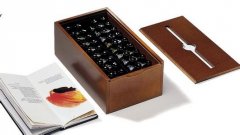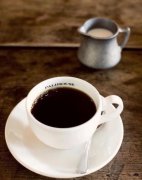Learn coffee, starting from understanding the three coffee waves
At first, it was the delicious three-in-one instant coffee, and then it changed to the fancy coffee represented by Starbucks. Now, more and more people are beginning to accept drinking black coffee without sugar and milk to taste the pure flavor of the beans themselves.
The first wave of coffee sprang up from instant coffee, represented by "Nestle" and "Maxwell". "delicious" and "Didi fragrance" are almost the opening remarks of coffee enlightenment education in the mainland. At that time, Chinese people involved in coffee were resistant to black coffee, which was popular in Europe and the United States, so Nestl é launched a bitter-free 1-to-2 mixed coffee and demonstrated its blending method in advertisements. In the sweet taste of the cream companion, the Chinese coffee journey begins.
However, it has not only led to the Chinese people's familiarity and understanding of the word coffee, but also buried a lot of hidden dangers. In the impression of most Chinese people, coffee is "Nestle", coffee is "bitter", and coffee should be mixed with "partner".

The second wave of coffee is gradually driven by Italian coffee represented by Starbucks and Costa in Europe and the United States after instant coffee. In China, the first second wave of coffee appeared on the basis of the first wave of coffee, with the gradual increase in the awareness of coffee among Chinese people and the Chinese market, and the emergence of conceptual cafes that mimic the rise of the second wave of coffee in Europe and the United States.
At the same time, Starbucks, the representative of the second wave of coffee in Europe and the United States, has explosively developed and expanded in China, and the "third space" built by Starbucks in the world has become the reason why people are infatuated with it. "in such a space, people's relationships are free and equal, without a sense of hierarchy in the workplace and without the shackles of various roles in the family, people can release themselves." Compared with the previous small cafes, Starbucks has built a perfect social and identity space. For the first batch of senior white-collar workers who patronize Starbucks, Starbucks has become "standard" for some kind of identity: high-income, tasteful and in line with international standards.

Take Shanghai, the home of foreign companies, as an example: Starbucks' sales in Shanghai reached 100 million yuan in two years after opening its first store on Shanghai Huaihai Road in 2000. Customers who know nothing about coffee but are curious can also feel relaxed at Starbucks. It has a stylish decoration and a comfortable atmosphere, but it is not as aggressive as other literary cafes. This is the kind of atmosphere Starbucks strives to create. It thoughtfully considers the habits of Chinese customers, such as Chinese consumers who prefer to eat in or near their stores, so most Starbucks stores in China offer more food and seats than in the United States. Considering that Chinese people like hot food, each store also has an oven, which makes Chinese customers who are used to drinking coffee in the afternoon or evening begin to patronize frequently in the morning. It is undeniable that the people-friendly concept of the second wave of cafes has indeed led to Chinese recognition and intimacy of coffee, and greatly enhanced the cultural heritage and national taste of a city.

The third wave of coffee can be said to be a revolution. It is precisely because the market is now flooded with a large number of products that fail to restore the quality of coffee itself, confusing the public's correct understanding of coffee, leading to the emergence of a group of advocates who really love fine coffee, who insist on providing fine coffee, spread authentic coffee culture, have exclusive cultural meaning, and provide coffee directly from the country of origin, as well as its exclusive culture and technology. So it can relatively attract people who really like coffee.
This kind of coffee shop, whether from the source of raw beans, roasting of coffee beans, the production of coffee, and even the selection of coffee cups have strict norms, the purpose is to return coffee to the true quality. The person in charge of this kind of coffee shop often has a deep attachment and understanding of boutique coffee and has the skills and knowledge including coffee bean roasting, coffee tasting and coffee making. It should be noted here that tasting coffee requires artistic feelings, but making coffee requires rigorous scientific methods, including the shelf life of coffee beans, the water temperature of brewing coffee, the way and time of water injection, and so on, often accurate to 1 degree Celsius and a few seconds.

You need to know something about the boutique coffee supported by the third wave of cafes.

As a proper noun, it has a strict definition. Like fine wine and tea, the "regional flavor (Terroir)" formed by the geographical environment, climatic characteristics and planting traditions of different producing areas is also the soul of high-quality coffee producing areas.

As a proper term, it was first put forward by Ms. Erna Knustsen, who is known as the godmother of boutique coffee, in the Tea and Coffee monthly (Tea& Coffee Trade Journal) in 1974, highlighting that "only in the most favorable microclimate, soil and water, can we cultivate boutique coffee with unique flavor", in order to distinguish it from the commercial coffee in the New York futures market. In 1972, Ms. Knudsen and Donner. Donald N. Schoenholt and six others co-founded the American Fine Coffee Association (SCAA Specialty Coffee Association of America), and the word "specialty coffee" became a global term.

Ms. Knudsen first put forward the concept of boutique coffee, emphasizing the relationship between upstream planting environment and coffee quality. Now, the American Fine Coffee Association has redefined the concept of boutique coffee: carefully select the most suitable variety and plant it in the altitude, climate, soil and water environment that is most conducive to the development of coffee flavor. Careful washing and sun processing, select the most advanced raw beans without defects, and deliver them to customers with zero defects in the transportation process. After the superb craftsmanship of the roaster, it leads to the richest regional flavor, and then brews delicious coffee in a recognized way of extraction. According to this definition, the connotation of fine coffee not only includes the most core factor of planting environment, but also includes three key processes: raw bean treatment process, baking process and extraction (brewing) process. In short, boutique coffee should be a high-quality coffee with "good raw beans, good roasting and good extraction".
Important Notice :
前街咖啡 FrontStreet Coffee has moved to new addredd:
FrontStreet Coffee Address: 315,Donghua East Road,GuangZhou
Tel:020 38364473
- Prev

What is a "coffee nose" baristas must bring items
LE Nez Du Cafe coffee nose is similar to alcohol nose Le Nez Du Vin, which is a group of coffee aroma bottles and a sharp weapon for coffee lovers to train their sense of smell. Baristas, coffee roasters and coffee quality appraisers (Q-grader) all use coffee noses to train their sense of smell, and the specific understanding and memory of the smell should be determined according to personal experience. Will
- Next

The qualities that a qualified barista should possess
1, do all the preparatory work before business; 2, debug a cup of espresso before business every day, adjust the bean grinder and coffee machine, so that the machine is in the best condition; 3, keep the bar clean and tidy, return to the position in time after using the utensils; 4, insist on doing your best with a cup of espresso and fall in love with your espresso; 5. Keep in a good mood every day and inject it
Related
- Beginners will see the "Coffee pull flower" guide!
- What is the difference between ice blog purified milk and ordinary milk coffee?
- Why is the Philippines the largest producer of crops in Liberia?
- For coffee extraction, should the fine powder be retained?
- How does extracted espresso fill pressed powder? How much strength does it take to press the powder?
- How to make jasmine cold extract coffee? Is the jasmine + latte good?
- Will this little toy really make the coffee taste better? How does Lily Drip affect coffee extraction?
- Will the action of slapping the filter cup also affect coffee extraction?
- What's the difference between powder-to-water ratio and powder-to-liquid ratio?
- What is the Ethiopian local species? What does it have to do with Heirloom native species?

